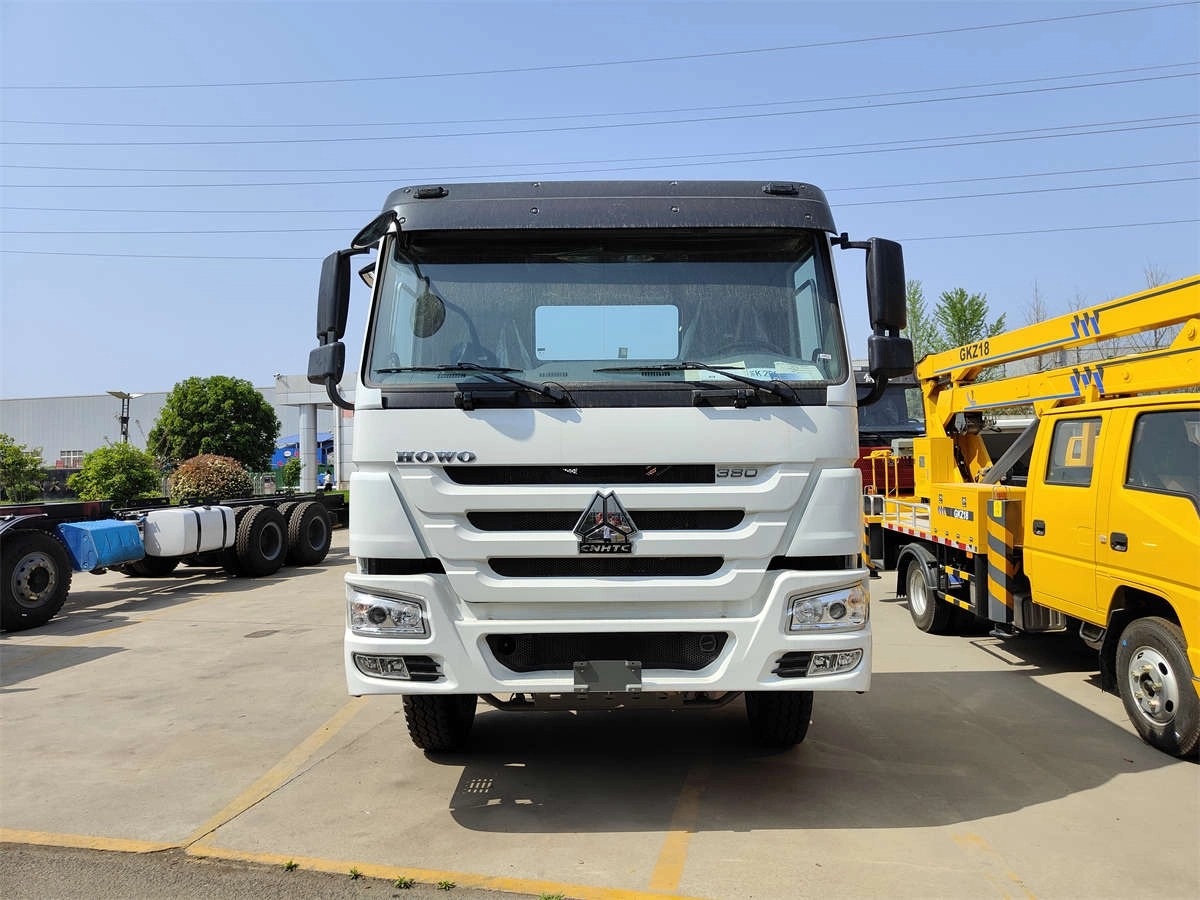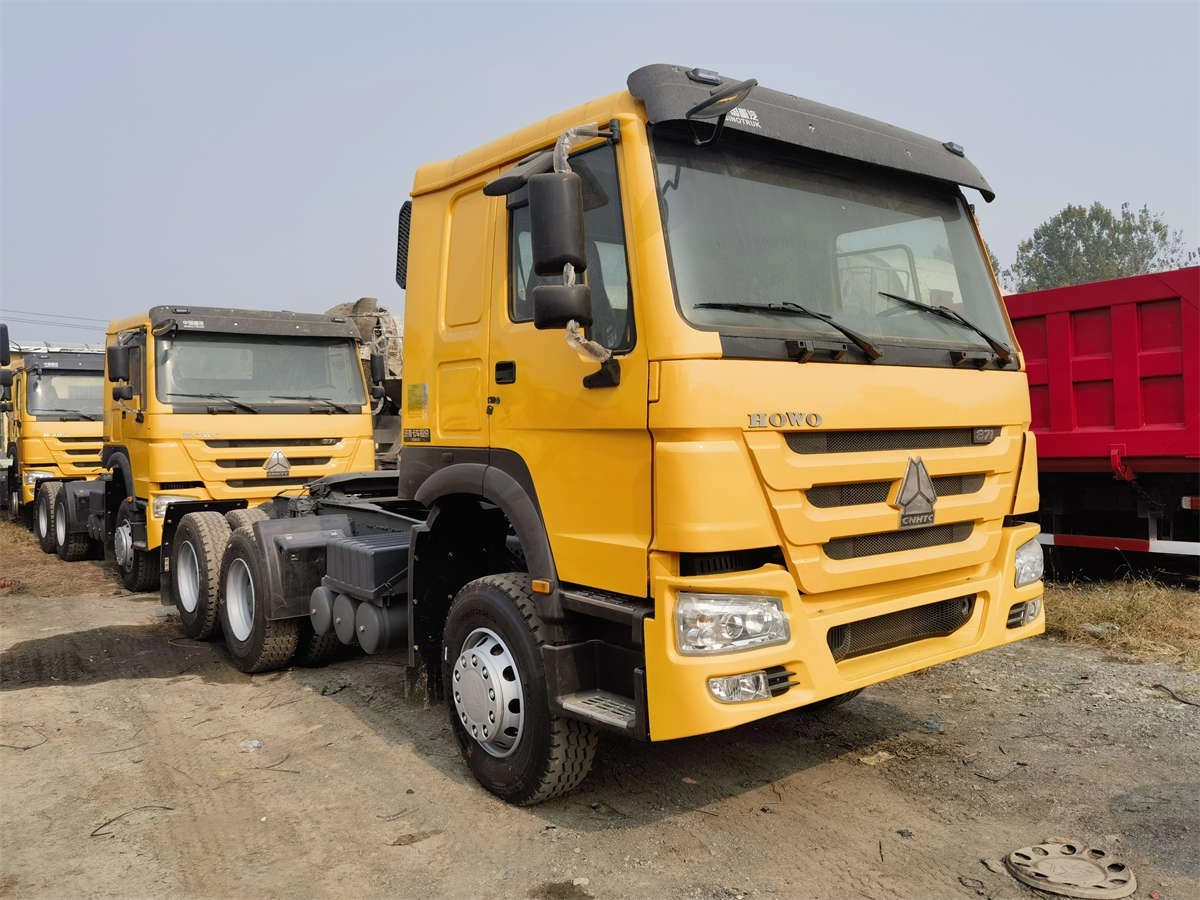Is the Tractor Head the Same as a Semi-Truck?
Views: 186 Author: Site Editor Publish Time: 2025-06-02 Origin: Site









Introduction
If you've ever stood at the edge of a busy freight terminal or driven past a logistics hub, you've likely seen towering, heavy-duty vehicles that transport goods across states, countries, and continents. These vehicles are commonly referred to as tractor heads or semi-trucks. But are they the same thing? The short answer is: not exactly — although the terms are often used interchangeably, there are technical and regional distinctions worth exploring.
This article aims to clear up the confusion by taking a deep dive into the definition, structure, function, and key differences between a tractor head and a semi-truck. Whether you're a logistics professional, a curious driver, or a fleet manager, understanding these distinctions is essential for making informed operational decisions.
What is a Tractor Head?
A tractor head, also known as a prime mover in some regions, is the front section of a tractor-trailer unit. It consists solely of the engine, cab, and chassis — the part that "pulls" the trailer. It is equipped with a fifth wheel coupling system that enables it to attach to different types of trailers, including flatbeds, refrigerated trailers, tankers, and container chassis.
Tractor heads are designed for maximum torque and pulling power, as their primary role is to haul heavy trailers over long distances. These machines typically come in 4x2, 6x4, or 6x2 axle configurations, depending on the required load capacity and terrain.
Key Characteristics of a Tractor Head:
Engine-only unit without cargo space.
Designed to be flexible — able to connect to different trailers.
High towing capacity and optimized for road performance.
Commonly used in international freight and logistics operations.
One critical point to understand is that a tractor head cannot carry freight on its own. It must be paired with a trailer to become a complete transport unit. Therefore, while a tractor head is a vital component of a semi-truck, it is not a complete vehicle by itself.
What is a Semi-Truck?
A semi-truck, also referred to as a tractor-trailer or articulated lorry, is a complete vehicle consisting of two main components: the tractor head and the semi-trailer. The term "semi" comes from the trailer not having front wheels — it relies on the tractor head for support at the front end.
When people use the term "semi-truck," they are referring to the entire combined unit: the tractor head (engine section) plus the attached trailer (cargo section). In North America, the term “semi-truck” is widely used, while in Europe and Asia, the term “tractor-trailer” or “articulated truck” is more common.
Key Characteristics of a Semi-Truck:
Consists of both the pulling unit (tractor head) and the cargo unit (trailer).
Capable of transporting goods over short and long distances.
Modular design allows easy detachment and switching of trailers.
So while every semi-truck includes a tractor head, not every tractor head qualifies as a semi-truck — until it is paired with a trailer.

Tractor Head vs Semi-Truck – Comparison Table
| Feature | Tractor Head | Semi-Truck |
|---|---|---|
| Definition | Engine-powered cab that pulls a trailer | Combination of tractor head and trailer |
| Contains Trailer? | No | Yes |
| Use Case | Towing various trailer types | Hauling freight over distances |
| Commonly Used In | Logistics fleets, ports, terminals | Long-haul transport and distribution |
| Modularity | High – interchangeable trailers | Fixed configuration for specific load |
| Legal Classification | Motor vehicle | Articulated vehicle |
This table simplifies the fundamental differences between the two terms. Remember: one is part of the other, but they are not identical.
Common Misconceptions Between the Two
They Look the Same, So They Must Be the Same
This is one of the most common misunderstandings. From an external viewpoint, especially when the trailer is already attached, the vehicle may look like a single, unified truck. However, the tractor head is a standalone unit capable of connecting with different trailers — it's essentially the muscle of the operation. A semi-truck, on the other hand, represents the whole system of transportation, not just the engine.
Every Truck on the Highway is a Semi-Truck
Not true. Many trucks on highways are rigid trucks or box trucks, which are non-articulated and have no detachable trailer. Additionally, some trucks are designed as full trucks with integrated cargo areas and don’t use a fifth wheel system.
Regional Terminology Differences
The confusion is further fueled by regional linguistic preferences. For instance:
In the United States, "semi-truck," "18-wheeler," and "tractor-trailer" are used interchangeably.
In Europe, the term "articulated lorry" or simply "artic" is more common.
In Asia, especially in freight-heavy countries, "tractor head" is the prevalent term, particularly in port logistics.
These variations lead to inconsistency in terminology and perception, especially in international discussions. It’s essential to clarify what is meant by each term in cross-border logistics or documentation.

FAQs – All You Need to Know About Tractor Heads and Semi-Trucks
Can a tractor head operate without a trailer?
Yes, it can drive on its own but cannot carry any cargo unless a trailer is attached.
Why do people call it a semi-truck?
Because the trailer is a “semi-trailer” — it doesn't have front wheels and requires the tractor to support it. The term “semi” refers to this partial design.
Are all semi-trucks powered by a tractor head?
Yes, by definition. A semi-truck is composed of a tractor head and a trailer.
Is it more economical to own just a tractor head?
Yes, especially for logistics companies that lease or rotate trailers. It offers flexibility in handling different types of freight.
Are there different types of tractor heads?
Absolutely. Depending on axle configuration, horsepower, and intended use (on-road vs. off-road), there are multiple tractor head variations.
Conclusion
In summary, while a tractor head is the power unit that pulls the trailer, a semi-truck is the complete vehicle composed of the tractor and trailer. They are inherently connected but not interchangeable in meaning. Understanding this distinction is crucial for logistics planning, vehicle classification, and transportation compliance.
OUR PRODUCTS
CONTACT US
Office:Rongjian Fortune No.1 Plaza, Jingshi Road, Huaiyin District, Jinan, Shandong, China
Phone:+86-156-6577-9395




